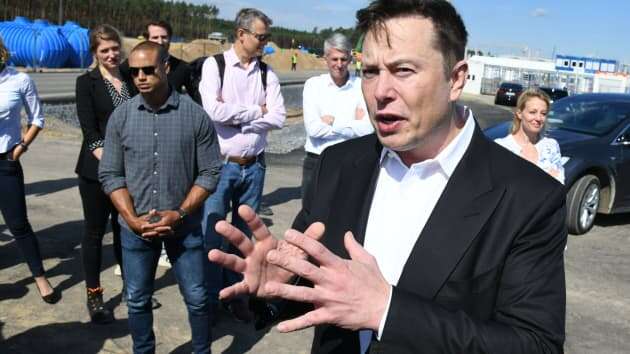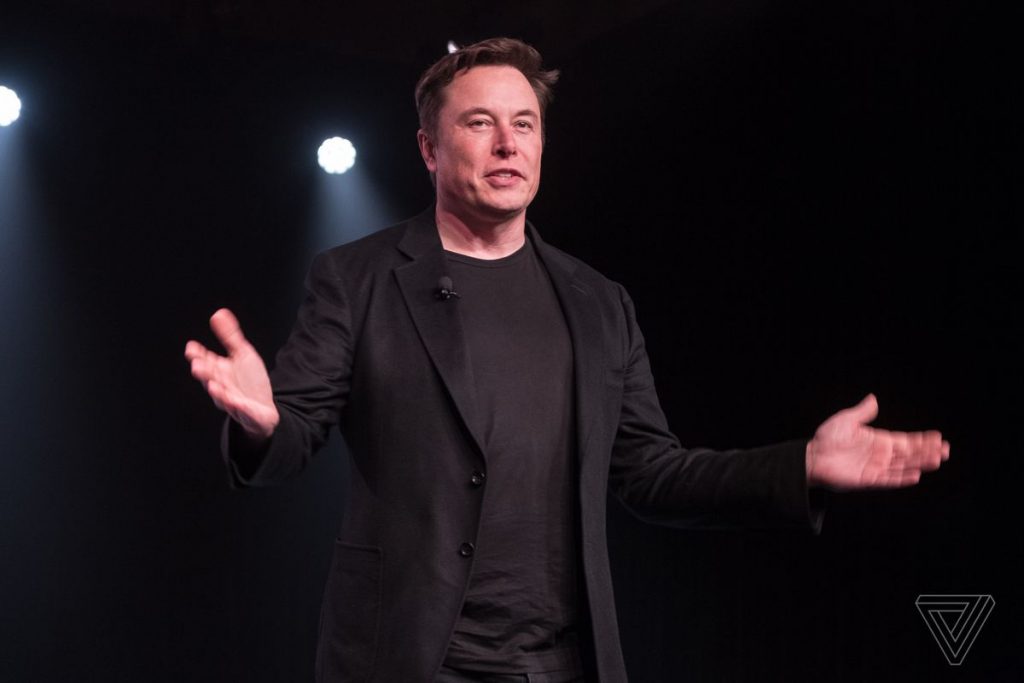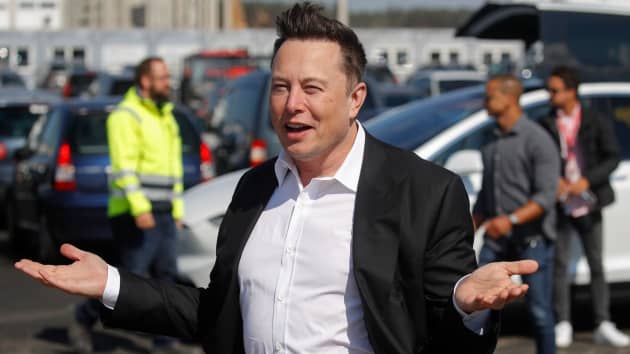Tesla CEO Elon Musk sent an e-mail to employees on Tuesday warning them that they need to control their spending in order to continue squeaking out quarterly profits, even though shares of Tesla are trading at all-time highs ahead of the company’s inclusion in the S&P 500.

Shares of Tesla were trading above $580 ahead of the market’s close on Tuesday.
This year, among other things, Tesla began spending to build a new factory near Austin, Texas, and another near Berlin. The company also embarked on a makeover of its paint facilities, which are part of its U.S. vehicle assembly plant in Fremont, California.
“Investors are giving us a lot of credit for future profitability but if, at any point, they conclude that’s not going to happen, our stock will immediately get crushed like a souffle under a sledgehammer!” Musk wrote in the email, which was obtained by CNBC.
Electric vehicle news site Electrek previously reported the contents of Musk’s email.
In early 2020, amid sluggish auto sales the world over, Tesla cut some employees’ pay temporarily, slashed contracts with temporary workers and fired an undisclosed number of workers after an annual performance review process. It has since rehired contractors and restored employee pay.

The Tuesday e-mail echoes previous statements by Musk but does not specify how Tesla plans to mind its budget.
On the company’s third-quarter earnings call, Musk told analysts and shareholders, “We’re trying to spend money at the fastest rate that we can possibly spend it and not waste it.”
But on that same call, Tesla CFO Zachary Kirkhorn said Tesla plans to ramp up its capital expenditures by $2 billion versus its prior stated plans to $2.5 billion in 2021 and 2022. Among other things, he said, the increased spending would enable Tesla to “in-source” things like some of its battery cell manufacturing.
Tesla raised $5 billion in September through an equity raise but needs to pay down about $1 billion in this, its fourth, quarter related to converts.
Tesla’s stock makes S&P 500 in a single step before Dec.21
Meanwhile, Tesla will be added to the S&P 500 in a single step despite its more than $500 billion market capitalization, S&P Dow Jones Indices said on Monday, forgoing a possible phased approach that was considered to ease the impact of adding such a large company to the U.S. stock benchmark.
The stock will be added at its full float-adjusted market capitalization before the open of trading on Dec. 21, the index provider said. Float-adjusted means that only shares available to the public are considered when evaluating a company’s weighting. The company that Tesla will replace will be named on Dec. 11, according to a press release.
The decision follows feedback from the investment community, which S&P Dow Jones Indices sought due to the difficulty of adding a company of Tesla’s size. The electric vehicle maker will be the largest company ever to be added to the S&P 500.
S&P Dow Jones Indices announced that Tesla would join the S&P 500 earlier in Nov., at which point it said it was considering whether Tesla should be added all at once prior to the market open on Dec. 21, or in two tranches on Dec. 14 and Dec. 21.
“In its decision, S&P DJI considered the wide range of responses it received, as well as, among other factors, the expected liquidity of Tesla and the market’s ability to accommodate significant trading volumes on this date,” the index provider said. Tesla’s addition to the S&P 500 will be based on the closing prices of Friday Dec. 18, coinciding with the expiration of stock options and stock futures, which should help facilitate the addition because of the high trading volume, S&P said.
According to Howard Silverblatt, senior index analyst at S&P Dow Jones Indices, Tesla’s float-adjusted market value of $437 billion will lead to $72.7 billion in required trades for managers of index funds tracking the benchmark, on top of normal trading activity come Dec. 21.
“The fact that when S&P originally made the announcement they sought feedback from the investment community on how to handle the addition tells you all you need to know to show how unique a situation this is,” noted Bespoke Investment Group founder Paul Hickey.
Tesla stock has jumped nearly 40% since the announcement that it would join the index, bringing its year-to-date gain to nearly 580%.
Hickey attributed the recent rally in shares to anticipation that the stock will need to be bought by money managers.
There’s currently over $11.2 trillion in assets benchmarked to the S&P 500, with roughly $4.6 trillion of the total in indexed funds, according to S&P Dow Jones Indices.
“There’s a lot of shifting that has to happen to make room for something that’s going to be as large as Tesla’s inclusion, so there will be a lot of moving pieces that we have to digest,” said Stephanie Hill, head of index at Mellon. Hill, who oversees around $350 billion, said of the two options presented by S&P Dow Jones Indices, adding Tesla in one tranche makes more sense given the added market activity on Dec. 21.
Goldman Sachs recently estimated that Tesla’s addition could result in $8 billion in demand from active U.S. large-cap mutual funds. When index funds are thrown into the mix, that figure is substantially larger.
The company’s inclusion in the S&P 500 was viewed as a foregone conclusion after Tesla reported its fourth straight quarter of profits in July — the final hurdle standing in the company’s way. But it was passed over during the S&P 500′s September quarterly rebalance, which sent shares momentarily tumbling.
The make-up of the S&P 500 is determined by what’s known as the “Index Committee” at S&P Dow Jones Indices, which analyzes quantitative as well as qualitative factors. Ultimately, the index is meant to be representative of the U.S. market as a whole.
Shares of Tesla gained more than 4% in extended trading following the announcement.
Source: CNBC















